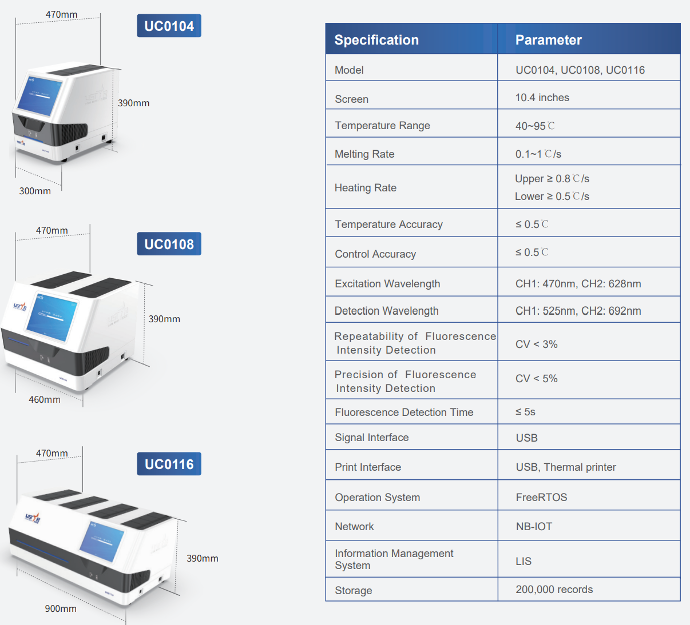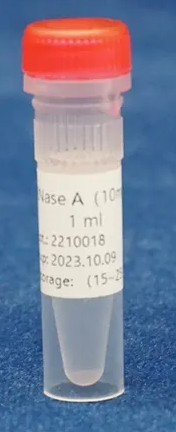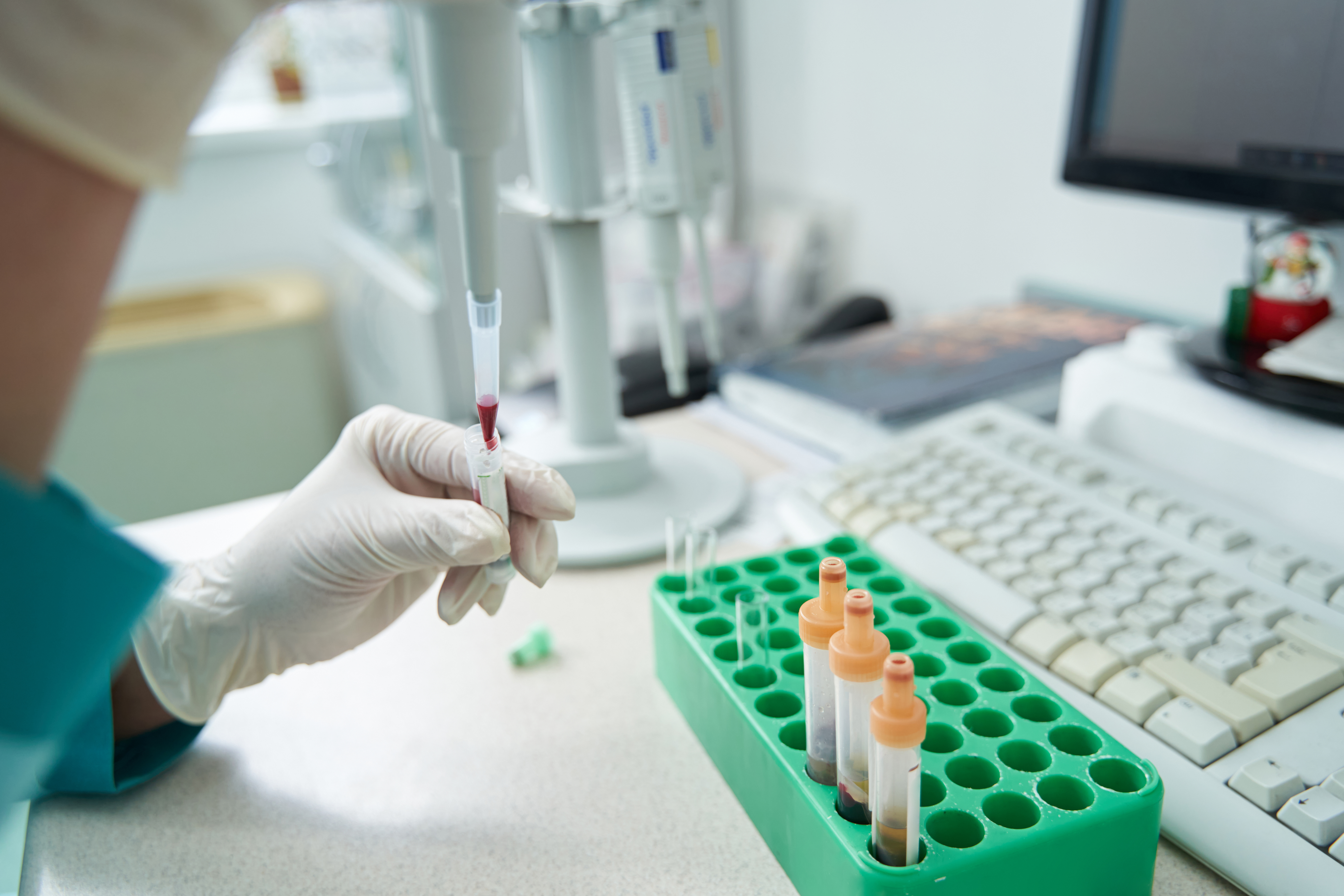Home
AffiPCR Council for Biotechnology Information

Jan 18, 2023
AMA's Vice President of Science, Medicine and Public Health Andrea Garcia, JD, MPH, discusses recent release by CDC, FDA regarding possible link between Pfizer's bivalent booster and stroke risk for those 65 and older. Also covering the potential increased risk of measles, mumps and rubella (MMR) for kindergartners given a decrease in pediatric vaccinations this year, as well as new findings regarding multisystem inflammatory syndrome (MIS-C) in children. American Medical Association CXO Todd Unger hosts.

00:00 AMA Update for Jan. 18, 2023
00:30 XBB 1.5 variant
01:07 COVID cases in the U.S.
01:39 COVID-19 hospitalizations and deaths
02:49 Pfizer vaccine stroke risk
03:50 Stroke risk and COVID vaccines
05:24 Is there higher risk of measles, mumps and rubella this year?
06:37 Any similarities between last year's polio cases and measles outbreaks?
07:31 COVID and MIS-C
08:15 New data on MIS-C in children
09:24 HHS extends COVID-19 public health emergency declaration
09:55 Why renew the coronavirus emergency declaration?
Visit the AMA Update video page for more videos in this series: https://www.ama-assn.org/


Help you grow
Biofuels Are Helping Build Rural Economies
Increasingly, farmers are providing the fuel for a world that's as hungry for safe, renewable forms of energy as it is for nutritious food. With petroleum production expected to peak sometime before 2020, plant-derived biofuels are in demand as a more sustainable, cleaner source of power that someday may be "grown" wherever crops are cultivated. … more
View past front page features
EasyNAT

July 27, 2005
Ten Years of Biotech Cropping Has Passed So Fast — American Farm Bureau
July 22, 2005
India Plumbs Biotech Benefits for Nutrition, Markets, Development — FarmWeek
July 20, 2005
Using Biotechnology to Improve the Yield and Quality of Rice — Western Farm Press
July 17, 2005
Biofuel Technology of Growing Importance as Source of Energy — Sunday Business Post
more 'in the news' headlines >
Copyright © 2004 Council for Biotechnology Information.
All rights reserved. Terms of Use Privacy Policy
Search
Key Topics
What's New:
From China to South Africa, biofuels are helping to boost farmer incomes.
Answers to frequently asked questions about biotech biofuels.
Biotechnology is helping farmers produce more corn that can be used for bio-based fuels such as ethanol.
Thanks to plant biotechnology, alternative biofuels and processes can be made more efficient and affordable to produce.
What's New:
Spike in global oil demand is making alternative fuels more attractive.
What the fortification of foods did to vastly improve health in the 20th century, some say biotechnology can do for the 21st century.
Reports conclude food developed with biotechnology is as safe or safer than food developed with conventional practices.
Biotechnology helps create long-lasting soybean oil that's better for your heart.
What's New:
Food or fuel? Common crops are developing different values as society slowly replaces petrochemicals with plant-based oils.
No-till conservation practices have increased 35 percent since biotech crops came on the market in 1996.
Corn that repels rootworm helps boost adoption rates.
Farmers say biotech crops boost yields and incomes.
What's New:
New USDA study says ethanol now yields 34 percent more energy than it takes to produce it.
Plants with increased iron, decreased cadmium, could improve global health.
Biotech cotton produces more than twice the yields for one South African mother.
Biotechnology is giving this popular fruit a new chance at survival.






SUCCESS STORIES

Microarray Digital Transformation
DNA chitp

Circadian Integration Explained for clock pathways
Kronos HT is a multi-well plate compatible model
appeared in Kronos series which measures
changes in gene expression over time
with bioluminescence of luciferase while
culturing cells.
ATTO High throughput real-time luciferase assay system
WSL-1565 ATTO Kronos HT
High throughput real-time luciferase assay system Kronos HT
High throughput assay system
for real-time gene expression monitoring of living cells
WSL-1565 Kronos HT is the high throughput support model of the assay
system that measure the gene expression of living cells in real-time with the bioluminescence of
luciferase. Kronos Dio, which is a precedent model compatible with 35 mm dish, has been used
as a real-time luminescence measurement system with cell culturing function, but this time a new
lineup of model compatible with multiwell plate measurement is added.
With this new product Kronos HT, we succeeded the know-how cultivated in the precedent model
in order to measure the luminescence while culturing the cells, and further strengthened functions
and performance for high throughput measurement. Please consider adopting Kronos HT for
high-throughput measurement in biological clock analysis, change in drug response with time,
cytotoxicity test etc.
NEW
• Cell culture function with temperature contol, humidifying
and controlling CO2 concentration
• 24 and 96 well plate format
• Scan 2 plates with 2 detectors (PMTs)
• It does not shake or vibrate cells by scanning with
detector moving and cuture plates not moving.
Biological clock, organ clock and cell clock... Biological clock, organ clock and cell clock.
chronomedicine, research progresses in the world.
Time
Intensity
Reporter assay in real time with culturing cells
Reporter assay is used to measure the transcriptional activity of gene transcription
regulatory sequences such as promoters, for researches on drug response and gene
the method of measuring the amount of bioluminescence using bioluminescent
enzyme luciferase using a device called a luminometer is superior in terms of high
sensitivity and low background and is widely used.
Usually, transcription activity at a certain point (end point) is measured, but the
assay is also becoming used for tracking transcription activity over time such as
stimulation response, time course of transgene expression level, periodic variation
of biological clock gene. Kronos HT is a system to optimize for such assays with the
ability to monitor the bioluminescence over time as cells are cultured.
Time course of drug response
Long-term kinetics of activity inhibition
Monitoring of biological clock
• High sensitive and low noise detection by cooling of
detectors (PMTs)
• Compatible with multicolor luciferase assay
• Easy setting with software on Windows PC, and
displaying and saving measurement data in real time.
chronomedicine, research progresses in the world.
expression control, evaluation of gene transfer effciency, and so on.
EzFluoroStain DNA(緑)
Light detecting with culturing cells
Sample stage (CO2
incubator)
Filter wheel
Cooled PMT
Multicolor assay
Maintain cell culture environment
The sample stage is a CO2 incubator with
CO2
control.
24/96 well plate compatible with adapter exchange
Although it is compatible with 24 well plates in the standard model,
it is also able to use 96 well plates by simply replacing it with an
adapter of an optional item.
High sensitive detection
Weak light can be detected by cooling
the detector (photomultiplier tube, PMT)
to 10°C to suppress thermal noise.
Since two plates are scanned simultaneously by two
detectors, more samples can be measured at shorter
intervals.
Cell-friendly scanning mechanism
Since it has a mechanism to move the detectors
without moving the sample stage, the cultured
cells are not shaken or vibrated.
Heating and
humidifying the gas
Controlling
CO2
gas concentration
CO2
gas
Exchanged to a 96 well plate adaptor (option)
Sample stage (setting two of 24 well plates)
It can be applied to multicolor luciferase assay with filter
automatic switching mechanism
and ATTO's original color separation system (patent).
Software
Setting measurement conditions
You can set it by simple operation. Setting
operation can be omitted by using the function
Display measurement data in real time
Since the data under measurement is displayed
in real time, you can check how the measured
value changes over time. Measurement data
taken out even during measurement.
Data processing
It has a smoothing function to remove
noise component from data and smooth
it, a multicolor calculation function to
calculate each color emission value
and a detrending function to extract
rhythm variation of biological clock.
Data export
Since data can be exported as a CSV format
spreadsheet software such as Microsoft
Excel or other analysis software. Also, you
can export the graph list of each data as an
Multicolor calculation
Smoothing
Detrending
Export as
Graph list display of all samples
Detailed graph list display
Main window
Setting window
Circadian rhythm of clock gene expression
Application
NF-κB response elemnt - TK promoter - SLG (green color emited luciferase) and TK promoter -
e in 96 well clear bottom plate
Measurement time: 5s x 2 color / well, Interval time: 30min
(A) Transcriptional activity of NF-κB response element for 48h
(B) Transcriptional activity of TK promoter for 48h
(C) Normalized by activity of control (TK promoter)
(D) Ratio to NF-κB activity without TNF-α
Transcriptional activity of clock gene, mPer2
mPer2
stable cell line in 24 well clear bottom plate
Measurement time: 5s / well, Interval time: 10min
Dual-color real-time luciferase assay of TNF-α induced NF-κB transcriptional activity
(
Measurement Photon counting method
Measurement time Integral time: 1 - 60 s/well, Measurement term: 1 h - 30 days
Plate format Clear bottom 24 well plate x 2
Clear bottom 96 well plate x 2 (Option), 35mm dish x 12 (Option)
Throughput
48 samples (24 well plate x 2)
192 samples (96 well plate x 2) with an optional item, 96well plate adaptor
12 samples (35mm dish x 12) with an optional item, 35mm dish adaptor
Incubation
temperature control Room temperature + 5°C to 45°C (0.1°C step) at room temperature 20 - 28°C
CO2 gas control Control to 5% by CO2 gas mixer
2
intermittently by humidifying unit, Maintaining >90%RH
Multi-color assay
rs
(There is also a model for 3 color separation. Request inquiries.)
PC requirements
OS: Windows 10 / 8.1 / 7, 64 / 32 bit, Memory: more than 4 GB, HDD: more than
20 GB free space, Interface: USB2.0 x 1 port
Dimensions, Weight
Main unit: 650 (W) x 520 (D) x 340 (H) mm, 40 kg
CO2 gas mixer: 160(W) x 300 (D) x 200 (H) mm, 4.8 kg
Humidifying unit: 170 (W) x 140 (D) x 115 (H) mm, 1.6kg
Power
Main unit: AC 100 - 240 V, 50 / 60 Hz, 400 W (max)
CO2 gas mixer: AC 100 - 240 V, 50 / 60 Hz, 100 W (max)
Humidifying unit: AC 100 - 240 V, 50 / 60 Hz, 24 W (max)
Code No. Model
3510140
WSL-1565 Kronos HT
Kronos HT main unit, Control software (for Windows PC), CO2
gas mixer,
Humidifying unit, 24 well plate adaptor
Code No. Model
3510147 96 well plate adaptor
3510148 35mm dish adaptor
Option
CO2 Main unit PC Humidifying unit gas mixer
(PC is not included in standard components)
Real-time luciferase assay system
35 mm dish format model
AB-2550ATTO Kronos Dio
Related product
Code No. Model
3510120 AB-2550 Kronos Dio
> Reporter assay in real time with culturing cells
> Cell culture function with temperature control, humidifying and
controlling CO2
gas concentration
> 35 mm dish format, 8 dishes
> Compatible with multicolor luciferase assay
> Easy setting with software on Windows PC, and displaying and saving
measurement data in real time.
Model AB-2550 Kronos Dio
Detector PMT (Photomultiplier tube)
Measurement Photon counting method
Throughput 8 samples (35 mm culture dish x 8)
Measurement
time 1 s - 60 min / dish
Incubator Temperature setting: 20°C (RT - 5°C) to 45°C (1°C step), CO2 concentration: 5%
Multi-color assay
requirements
OS: Windows 10 / 8.1 / 7, 64 / 32 bit, Memory: more than 4 GB, HDD: more than
20 GB free space, Interface: USB2.0 x 1 port
Dimensions,
Weight 280 (W) x 400 (D) x 330 (H) mm, 16 kg
Power AC 100 - 230 V, 50 / 60Hz, 150W (max)
(

The EasyNAT® System
PCR POCT Workstation based on three-stage magnetic conductivity extraction technology and patented Cross Priming Amplification Technology.
The system is available in a 4, 8 or 16-module configuration.
Workflow
Order Information at Gentaur group
Related documents
Brochure_EasyNAT System for COVID-19_.pdf
Brochure_EasyNAT System_EN_20220908.pdf
Related video
EasyNAT® System for COVID-19
50,000+ laboratories run why to grow their research.
Next-Generation PCR
WhyBio offers the best-in-class PCR reagents engineered using our high-throughput molecular evolution platform. The novel DNA polymerases contained within our kits confer dramatic improvements to performance that enable results and applications not possible with wild-type enzymes.
Next-generation PCR is defined as the shift from generalist wild-type enzymes toward designer specialist enzymes. WhyBio has engineered, high performance reagents for real-time PCR, high fidelity PCR, next-generation DNA sequencing, fast PCR, hot start PCR, crude sample PCR, robust PCR, and molecular diagnostics.

Gene Expression Analysis
Despite the high precision of qPCR, conclusions drawn from gene expression experiments are often misleading due to differences in amplification efficiency between the gene of interest and the housekeeping gene(s).
WhyBio reference 0957-B21202 consisits of 2x SYBR Green qPCR Master Mix in 5ml fast qPCR which is an evolved DNA polymerase that exhibits improved speed, processivity and robustness resulting in consistently high amplification efficiencies required for accurate relative quantification, regardless of amplicon length or complexity.
For more detailed information on gene expression and how WhyBio qPCR Kits can help to improve your results please download our new application notes:
Introducing WhyBio Library Quantification Kits

Eliminate time-consuming and expensive titrations and reduce variability in cluster density or template-to-bead ratio with a high performance qPCR solution for next-gen sequencing library quantification.
Standard methods for quantifying next-generation sequencing libraries have a number of important disadvantages.
Electrophoresis and spectrophotometry measure total nucleic acid concentrations, whereas optimal cluster density or template-to-bead ratio depend on the appropriate concentration of PCR-amplifiable DNA molecules. These methods also have low sensitivity, consuming nanograms of precious samples, and are not suitable for high-throughput workflows.
Quantitative PCR (qPCR) is inherently well-suited for next-generation sequencing library quantification:
- qPCR specifically quantifies only PCR-competent DNA molecules,
- is highly sensitive allowing accurate quantification of low concentration libraries,
- is amenable to automated liquid handling.
